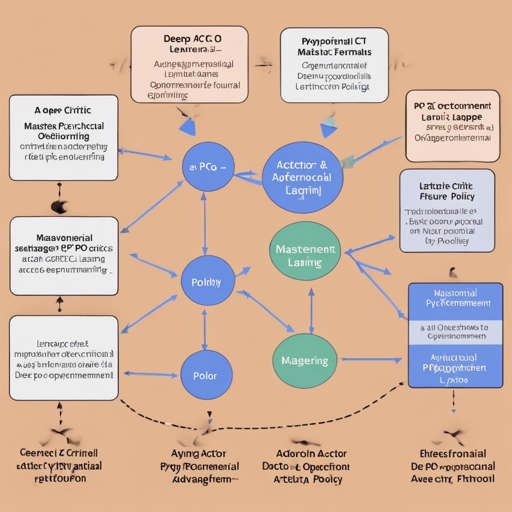Welcome to the realm of deep reinforcement learning! Today, we’re diving into the intricacies of two powerful Actor-Critic algorithms: Synchronous A3C (A2C) and Proximal Policy Optimization (PPO), implemented through the torch_ac package.
Understanding the Concepts: A Simple Analogy
Imagine you’re training a dog to fetch a ball. Your dog can learn in two ways: through direct feedback (like A2C), where you throw the ball and tell your dog whether it did a good job after each attempt; or with a more adaptive approach (like PPO), where you provide feedback but with certain limits to avoid confusion. In both methods, the dog learns over time by improving its performance based on your guidance.
Getting Started with Installation
To begin your journey with torch_ac, you’ll need to install it. Here’s how:
bash
pip3 install torch-ac
If you wish to modify the algorithms, clone the repository instead:
bash
git clone https://github.com/lcswillems/torch-ac.git
cd torch-ac
pip3 install -e .
Unpacking the Package Components
The torch_ac package is rich with components. Here’s a brief overview:
torch_ac.A2CAlgoandtorch_ac.PPOAlgoclasses – for A2C and PPO algorithms.torch_ac.ACModelandtorch_ac.RecurrentACModel– abstract classes for actor-critic models.torch_ac.DictListclass – enhances batch-friendly operations with dictionaries of lists.
Diving Deeper: Important Components Details
Let’s take a closer look at the core functionalities of the A2C and PPO algorithms:
- The
__init__method accepts parameters such as:- acmodel – your actor-critic model instance.
- preprocess_obss – transforms observations into a list-indexable object.
- reshape_reward – modifies reward based on the action taken.
- The
update_parametersmethod – collects experiences, updates the parameters, and returns logs. - For recurrent models, specify the number of timesteps for gradient backpropagation.
Examples to Guide You
Here are some examples to illustrate how to effectively use the functionalities of the torch_ac package.
Using A2C and PPO Algorithms
python
algo = torch_ac.PPOAlgo(envs, acmodel, args.frames_per_proc,
args.discount, args.lr, args.gae_lambda,
args.entropy_coef, args.value_loss_coef,
args.max_grad_norm, args.recurrence,
args.optim_eps, args.clip_eps,
args.epochs, args.batch_size,
preprocess_obss)
exps, logs1 = algo.collect_experiences()
logs2 = algo.update_parameters(exps)
Utilizing DictList
python
torch_ac.DictList(
image=preprocess_images([obs[image] for obs in obss], device=device),
text=preprocess_texts([obs[mission] for obs in obss], vocab, device=device))
Implementing RecurrentACModel
python
class ACModel(nn.Module, torch_ac.RecurrentACModel):
...
def forward(self, obs, memory):
...
return dist, value, memory
Troubleshooting Guidance
If you encounter issues, consider the following troubleshooting tips:
- Ensure all dependencies are correctly installed.
- Check that your data preprocessing aligns with the expected input format.
- Look into the logs generated by the algorithms for potential insights.
For more insights, updates, or to collaborate on AI development projects, stay connected with fxis.ai.
A Bright Future with AI
At fxis.ai, we believe that such advancements are crucial for the future of AI, as they enable more comprehensive and effective solutions. Our team is continually exploring new methodologies to push the envelope in artificial intelligence, ensuring that our clients benefit from the latest technological innovations.
With this guide, you should now feel empowered to explore the functionalities of A2C and PPO in your reinforcement learning projects. Happy coding!

